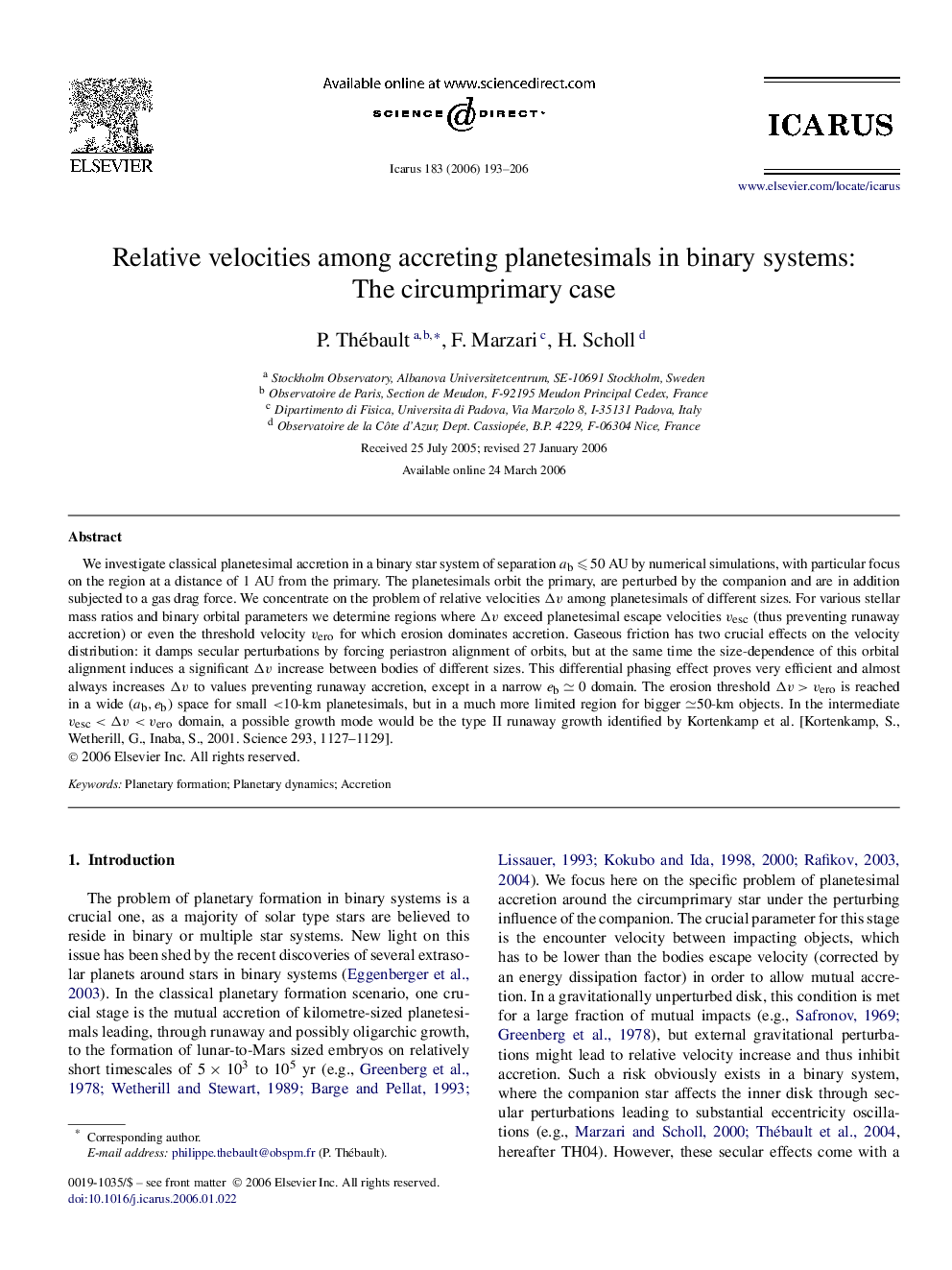| Article ID | Journal | Published Year | Pages | File Type |
|---|---|---|---|---|
| 1776088 | Icarus | 2006 | 14 Pages |
Abstract
We investigate classical planetesimal accretion in a binary star system of separation ab⩽50AU by numerical simulations, with particular focus on the region at a distance of 1 AU from the primary. The planetesimals orbit the primary, are perturbed by the companion and are in addition subjected to a gas drag force. We concentrate on the problem of relative velocities Îv among planetesimals of different sizes. For various stellar mass ratios and binary orbital parameters we determine regions where Îv exceed planetesimal escape velocities vesc (thus preventing runaway accretion) or even the threshold velocity vero for which erosion dominates accretion. Gaseous friction has two crucial effects on the velocity distribution: it damps secular perturbations by forcing periastron alignment of orbits, but at the same time the size-dependence of this orbital alignment induces a significant Îv increase between bodies of different sizes. This differential phasing effect proves very efficient and almost always increases Îv to values preventing runaway accretion, except in a narrow ebâ0 domain. The erosion threshold Îv>vero is reached in a wide (ab,eb) space for small <10-km planetesimals, but in a much more limited region for bigger â50-km objects. In the intermediate vesc<Îv
Related Topics
Physical Sciences and Engineering
Earth and Planetary Sciences
Space and Planetary Science
Authors
P. Thébault, F. Marzari, H. Scholl,
